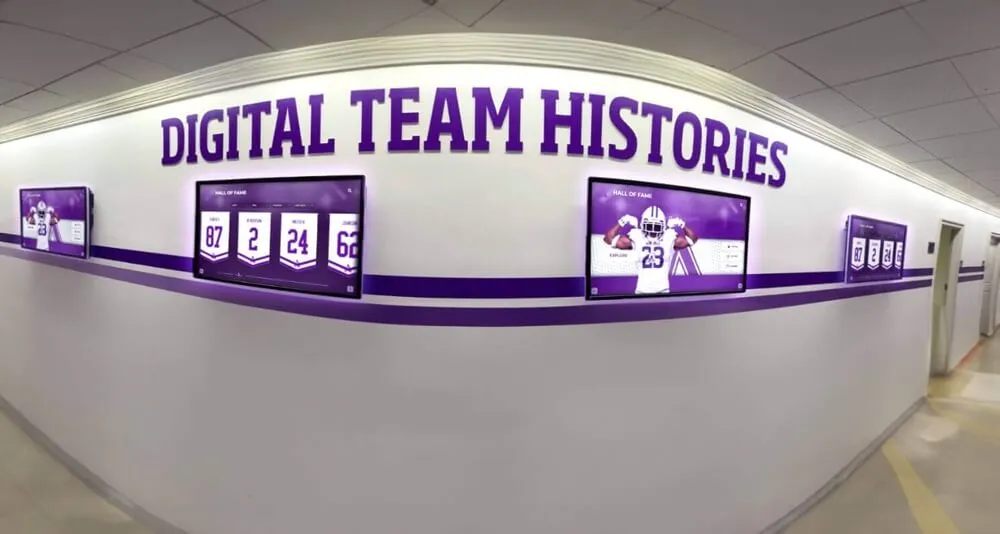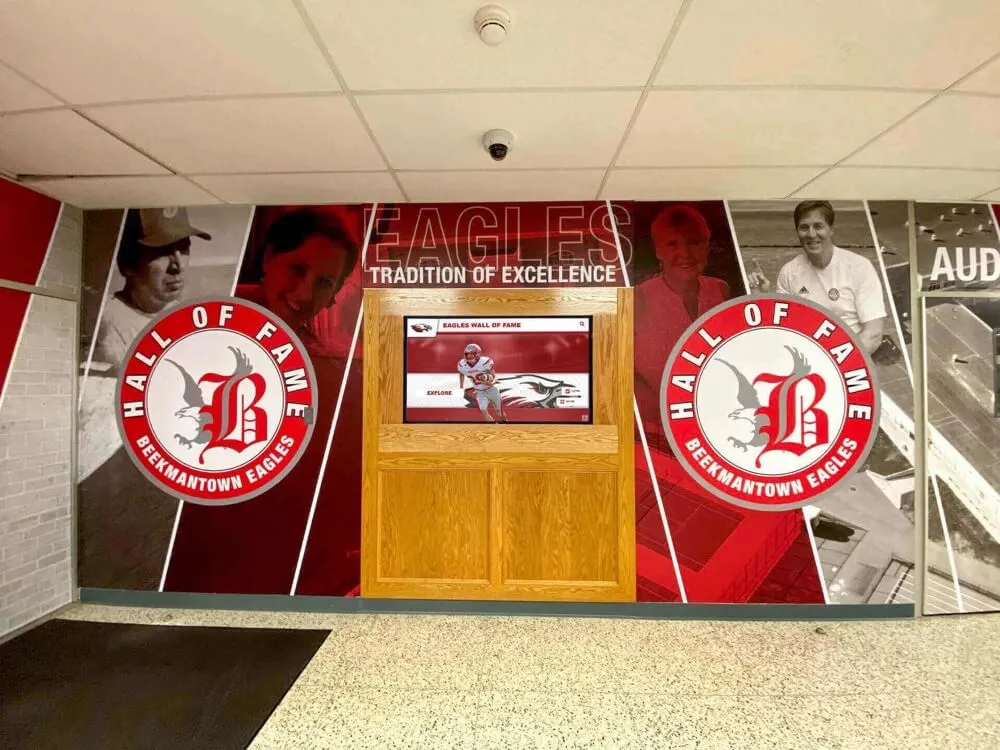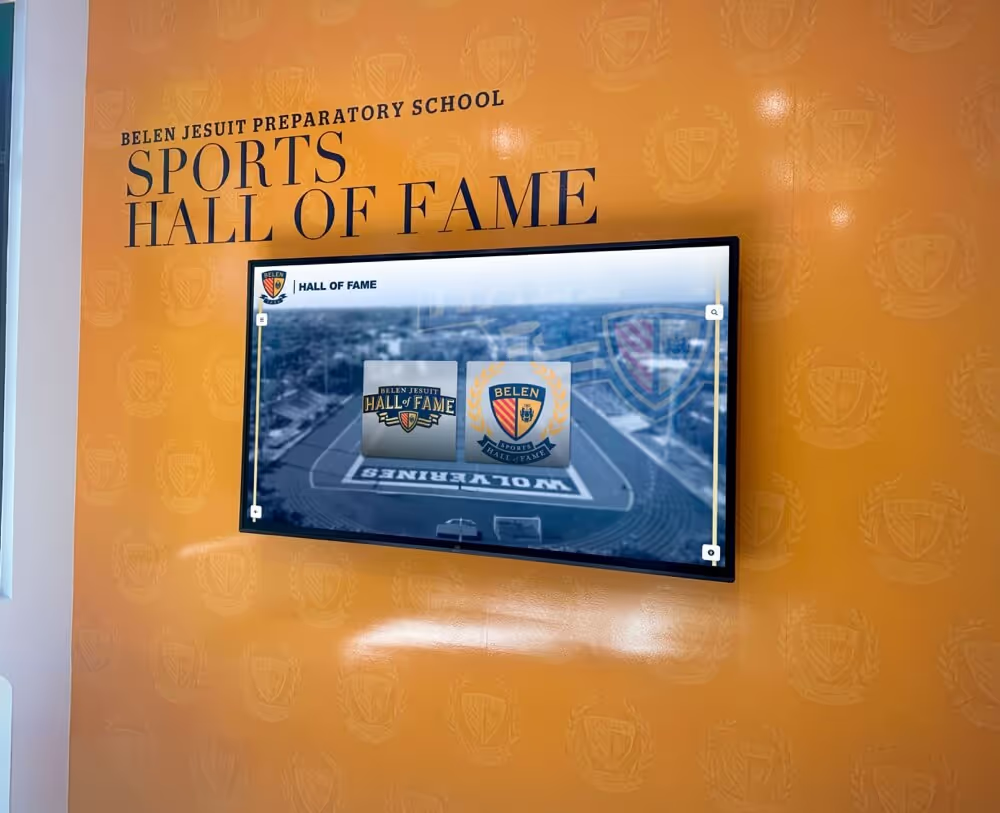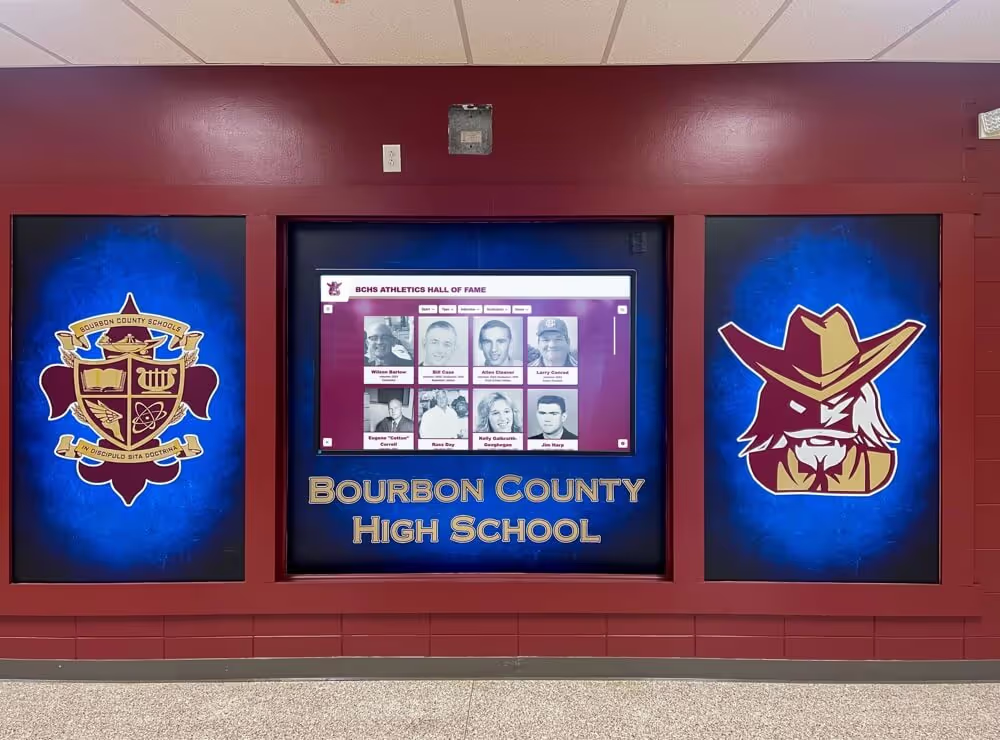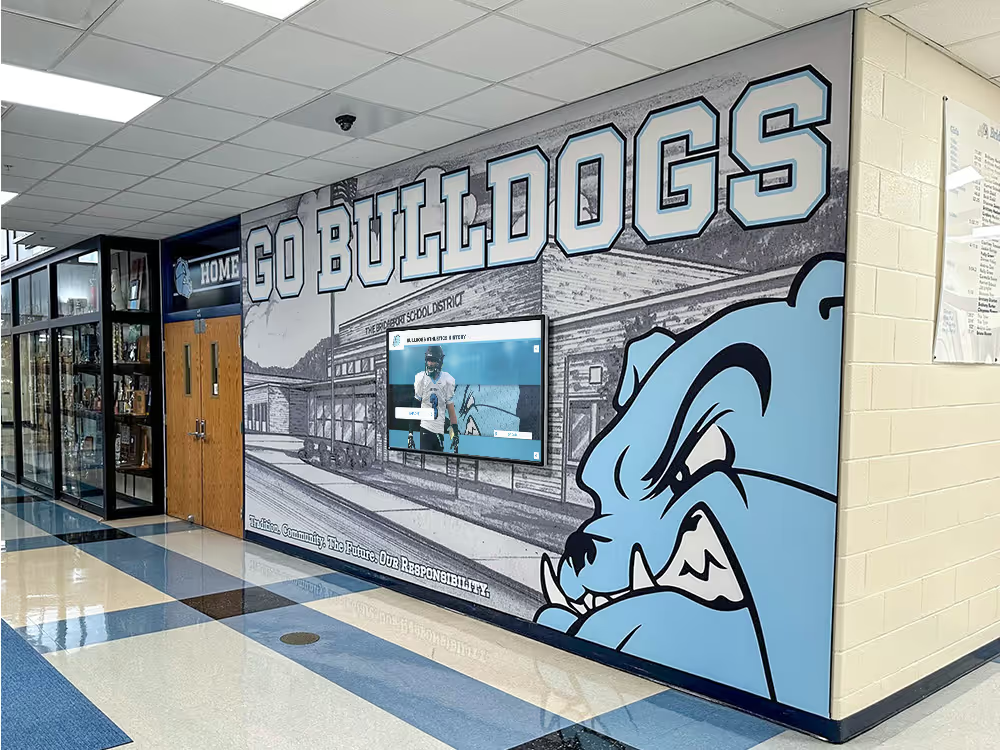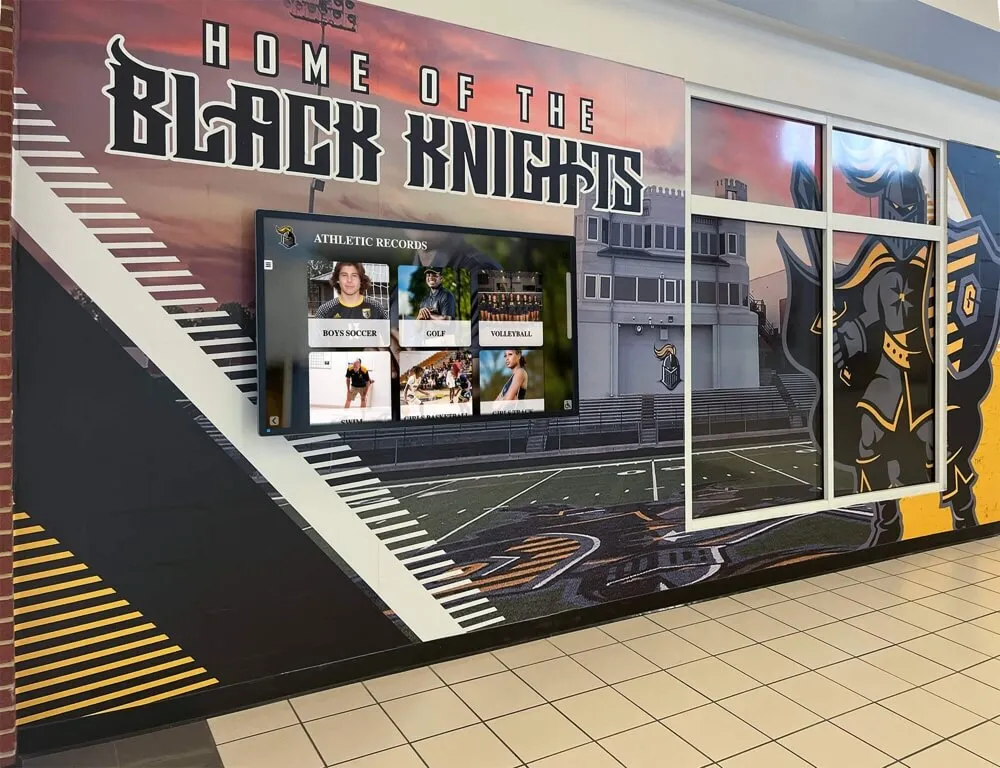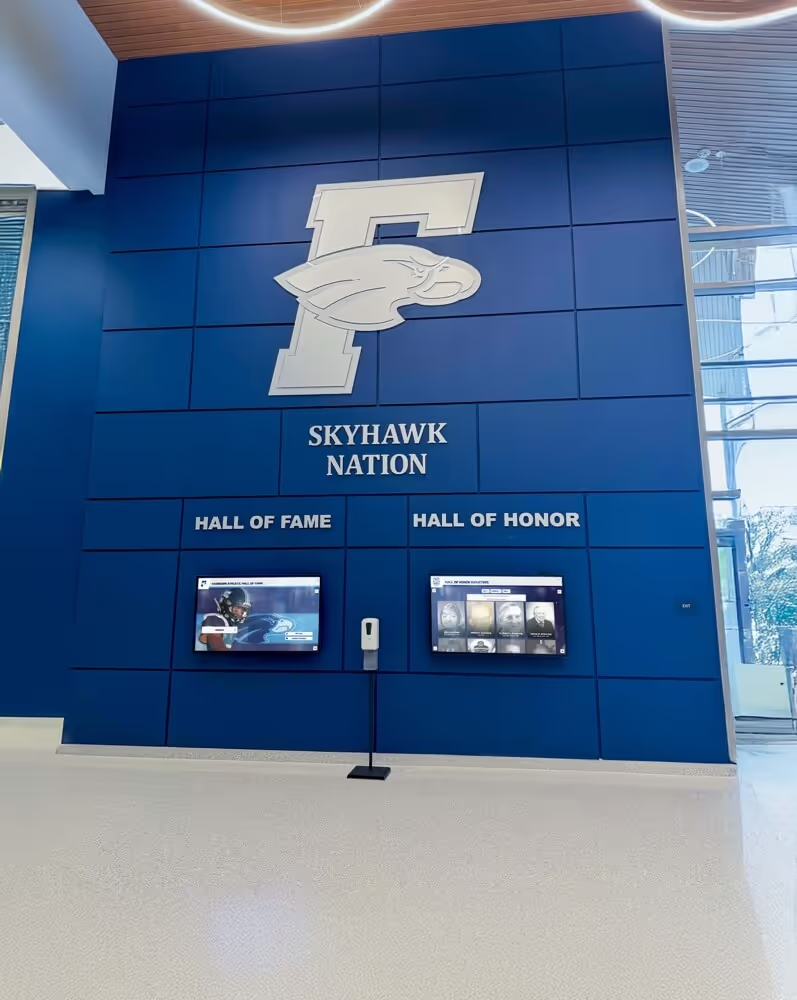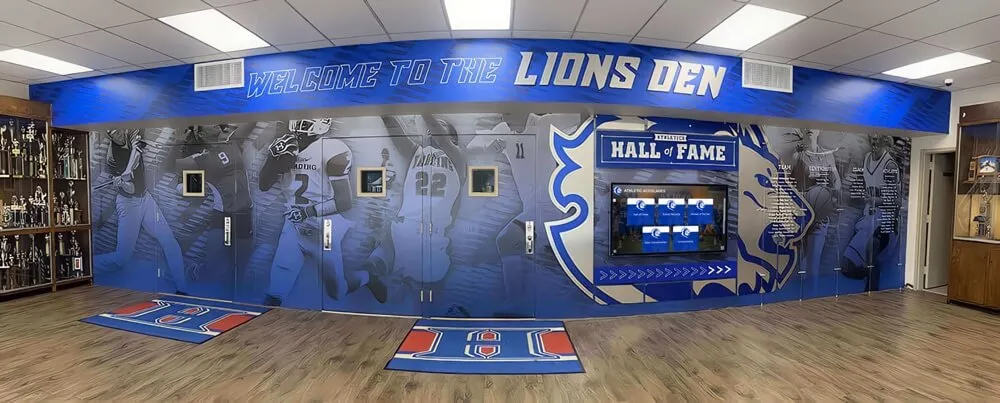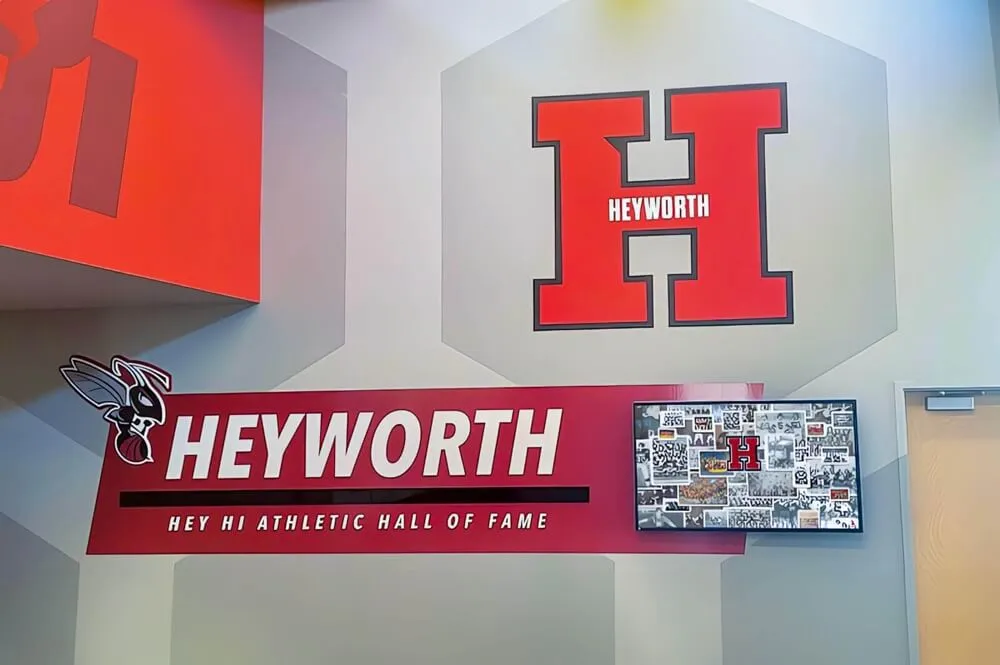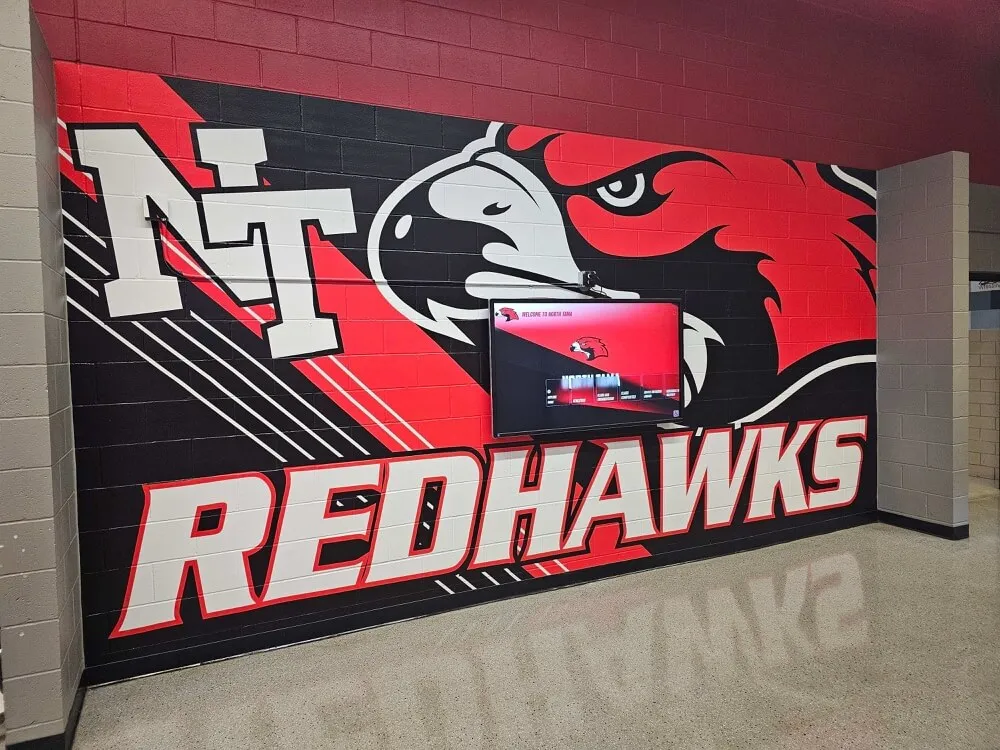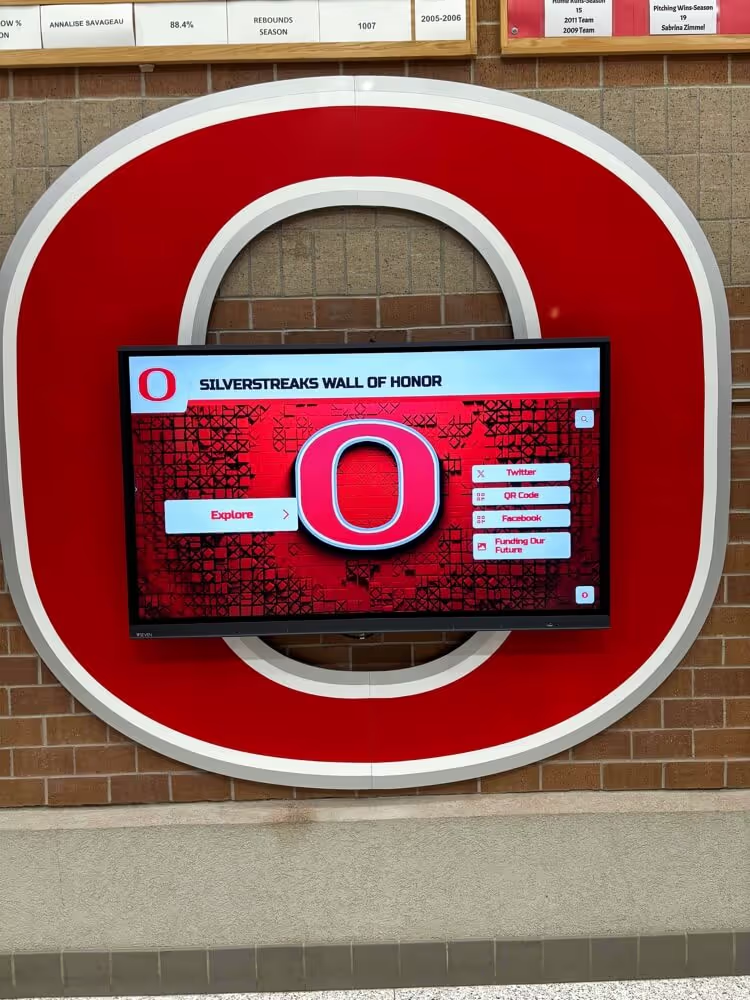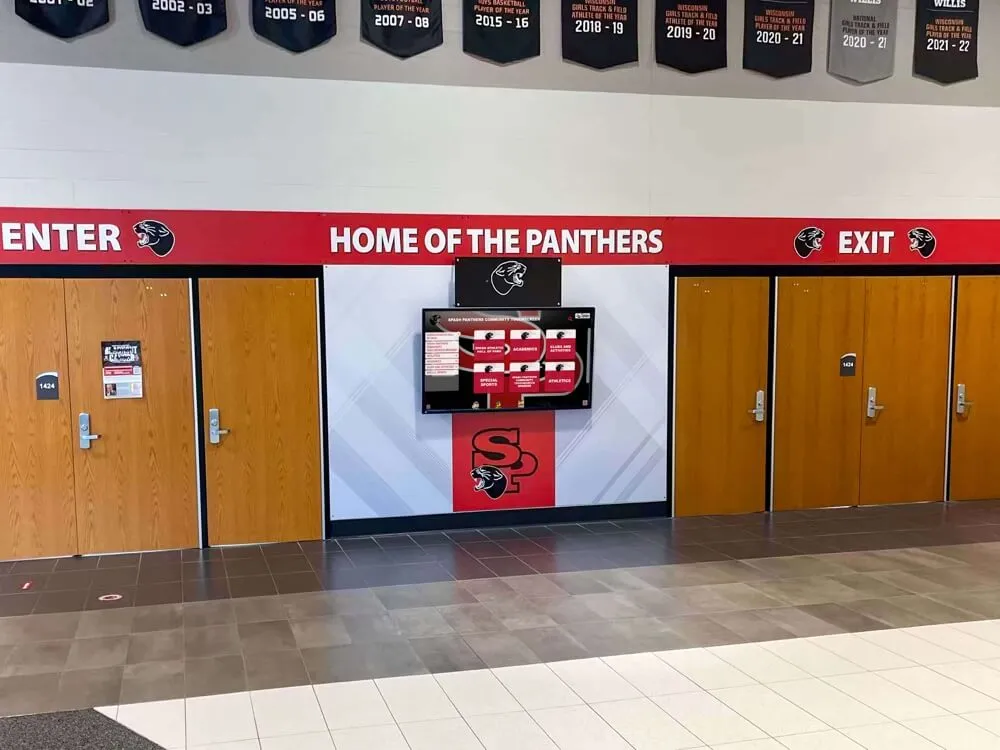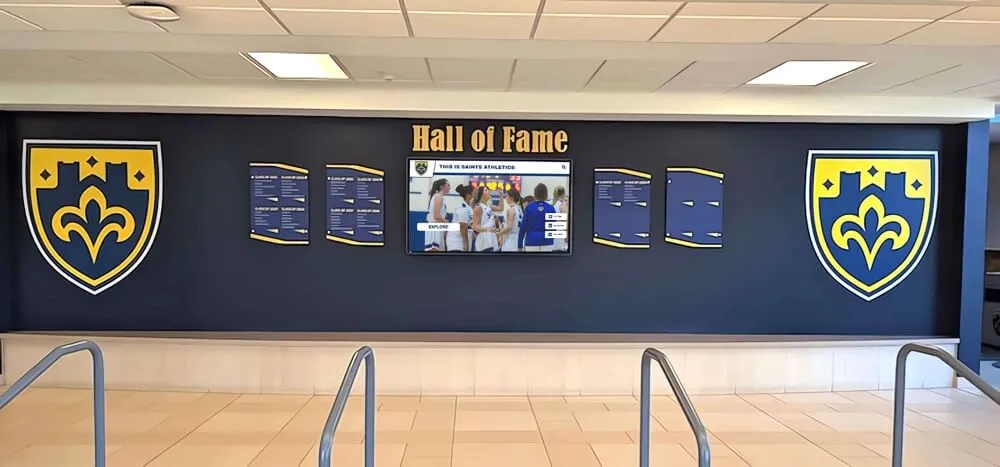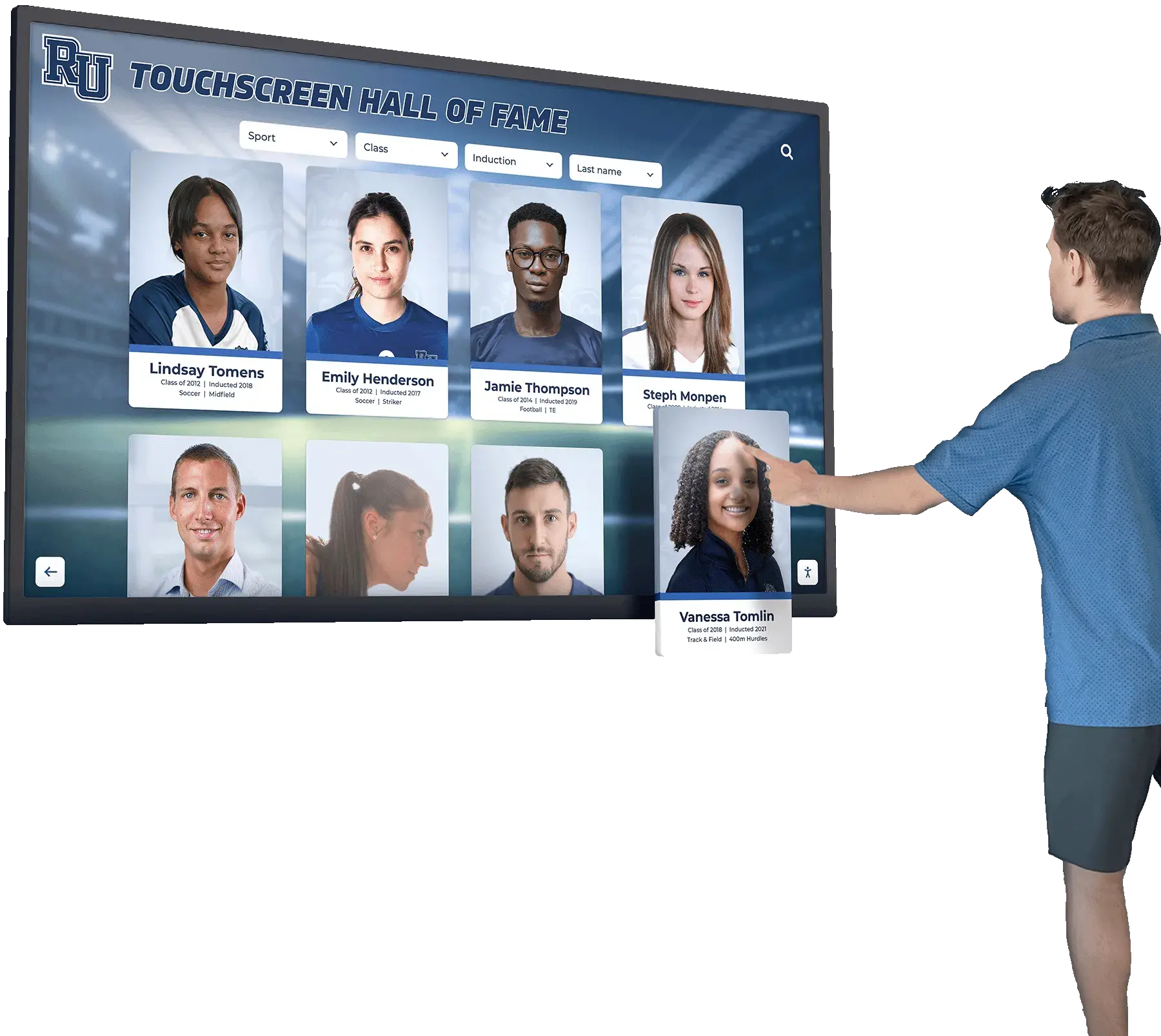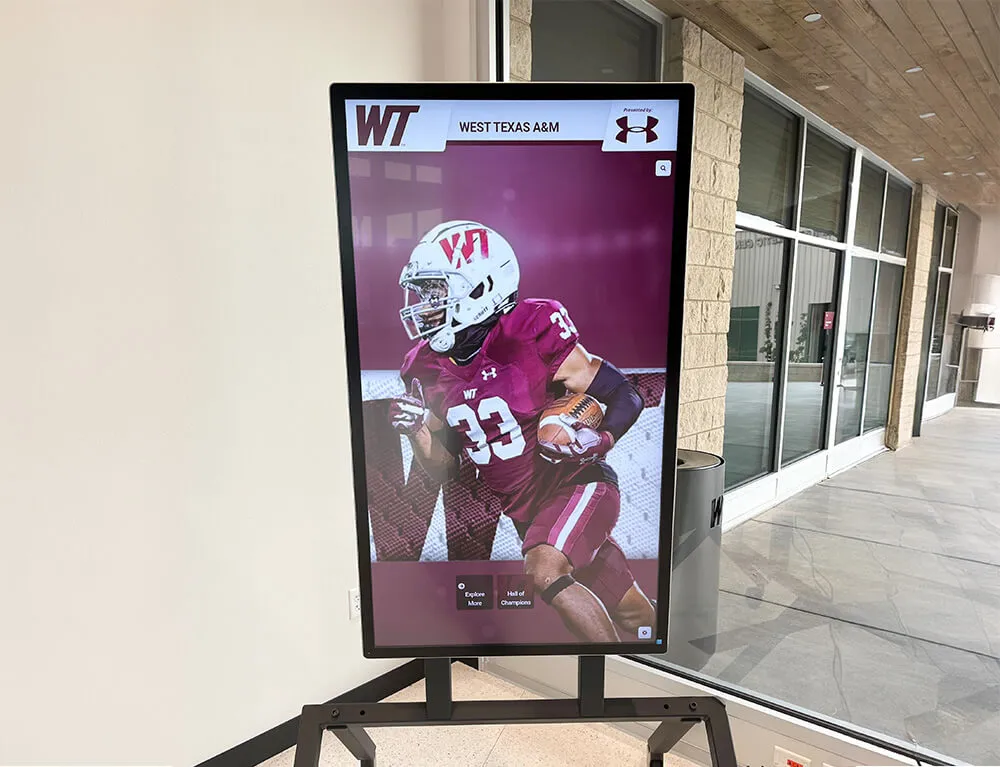Table of Contents
- The Science Behind Athletic Recognition
- Psychological Impact on Performance
- Recognition and Student-Athlete Retention
- Intrinsic vs. Extrinsic Motivation in Athletics
- Modern Recognition Systems and Engagement
- Best Practices for Athletic Directors
The Science Behind Athletic Recognition
Athletic recognition serves as far more than simple acknowledgment of achievement—it functions as a powerful psychological tool that shapes student-athlete motivation, performance outcomes, and long-term program engagement. Understanding the science behind recognition helps athletic directors optimize their programs for maximum impact.

Athletic recognition systems create psychological environments that support student-athlete development and achievement
Recent research in sports psychology reveals that athletic recognition systems fundamentally alter the psychological landscape of competitive environments. A 2025 comprehensive review published in Frontiers in Psychology demonstrates that motivation—particularly as it relates to recognition—is one of the most critical factors influencing athletic performance and overall well-being.
Modern solutions from providers like Rocket Alumni Solutions leverage these psychological principles by creating dynamic recognition environments that adapt to individual athlete needs while building collective program identity. These systems complement traditional displays while offering digital record boards that can instantly reflect new achievements.
Neuroscience of Recognition and Achievement
The human brain’s response to recognition activates several critical psychological pathways:
- 🧠Dopamine Release Patterns
Recognition triggers dopamine release in the brain's reward centers, creating positive reinforcement cycles that encourage continued effort and achievement-seeking behavior.
- ⚡Neural Pathway Strengthening
Visible recognition creates stronger neural associations between effort and positive outcomes, making athletes more likely to maintain high performance standards.
- 🎯Self-Efficacy Development
Public recognition builds athletes' confidence in their abilities, creating upward spirals of performance improvement and goal achievement.
Social Identity Theory and Team Culture
Athletic recognition operates within the framework of social identity theory, where individual achievements contribute to collective group identity:
Individual Identity Formation
- Achievement Integration: Recognition helps athletes internalize their accomplishments as part of their personal identity
- Competence Building: Visible achievements reinforce feelings of athletic competence and capability
- Future Orientation: Current recognition creates positive expectations for future performance
- Resilience Development: Public acknowledgment provides psychological resources for overcoming setbacks
Collective Team Psychology
- Shared Standards: Record boards establish visible performance benchmarks for all athletes
- Legacy Connection: Current athletes connect with program history and traditions
- Peer Influence: Recognition creates positive peer pressure and healthy competition
- Cultural Continuity: Consistent recognition patterns reinforce program values across generations
Psychological Mechanisms of Motivation
Research identifies several key mechanisms through which athletic recognition influences motivation and performance:
Core Motivation Pathways in Athletic Recognition
Competence Satisfaction
- • Public validation of skills
- • Mastery goal achievement
- • Performance standard setting
- • Skill development tracking
- • Progress visualization
Autonomy Support
- • Self-directed goal setting
- • Personal achievement focus
- • Individual recognition paths
- • Choice in goal pursuit
- • Ownership of success
Relatedness Building
- • Team belonging reinforcement
- • Peer recognition dynamics
- • Coach-athlete relationships
- • Alumni connections
- • Community engagement
Psychological Impact on Performance
The psychological effects of athletic recognition systems extend far beyond momentary satisfaction, creating measurable impacts on performance outcomes, training engagement, and competitive success across multiple dimensions of athletic development.
Performance Enhancement Mechanisms
Research demonstrates that properly implemented recognition programs create specific performance benefits:
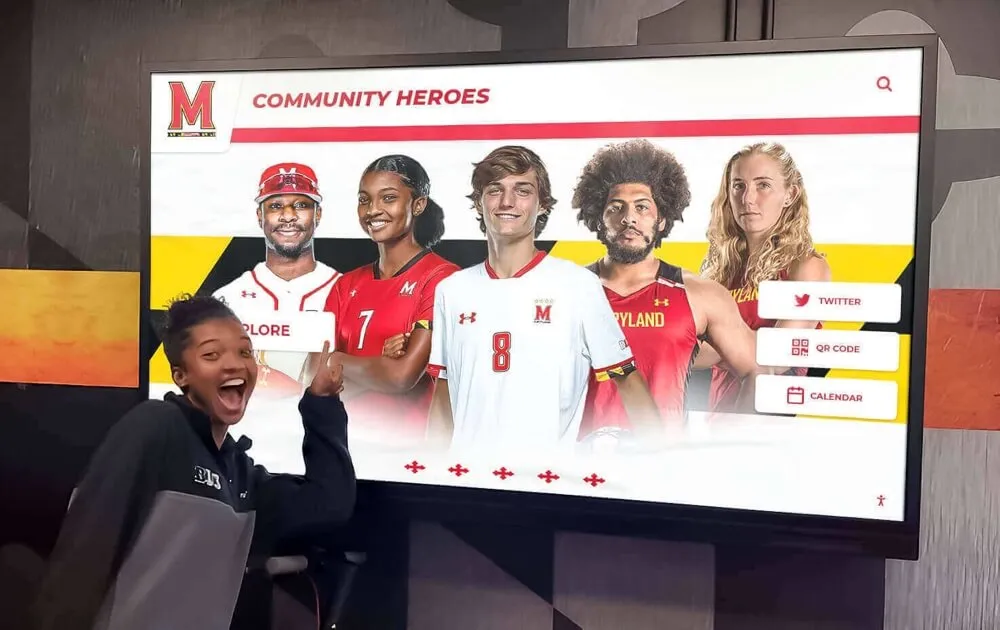
Strategic recognition programs enhance athletic performance through psychological reinforcement mechanisms
Contemporary sports psychology research reveals that student-athlete motivation operates through complex psychological pathways that recognition systems can strategically influence:
- Goal-Setting Amplification Visible records create specific, measurable targets that enhance goal-setting effectiveness and achievement motivation
- Flow State Facilitation Recognition reduces performance anxiety while increasing focus on mastery, creating optimal conditions for flow experiences
- Confidence Building Public acknowledgment builds sport-specific confidence that transfers to competitive performance under pressure
- Stress Resilience Recognition provides psychological resources that help athletes maintain performance during high-stress competitions
- Persistence Enhancement Visible achievement histories encourage continued effort during difficult training periods and performance plateaus
- Team Cohesion Strengthening Shared recognition experiences build team unity and collective efficacy that improves group performance
Quantitative Performance Outcomes
Recent studies provide concrete evidence of recognition’s impact on athletic performance:
Research-Based Performance Improvements
Individual Performance Metrics
- Training Consistency: 23% improvement in training attendance and effort scores
- Goal Achievement: 31% higher rate of personal record attainment
- Competition Performance: 18% improvement in pressure situation execution
- Skill Development: 27% faster progression through skill development benchmarks
- Season Longevity: 15% reduction in mid-season performance decline
Team Dynamics Improvements
- Team Chemistry: 34% improvement in cohesion assessment scores
- Leadership Development: 42% increase in peer leadership behaviors
- Communication Quality: 29% improvement in positive team communication
- Collective Efficacy: 25% increase in team confidence measures
- Cultural Transmission: 38% better integration of new team members
Cognitive and Emotional Benefits
Athletic recognition systems create psychological benefits that extend beyond immediate performance:
Cognitive Development
- ✓ Strategic Thinking: Recognition encourages long-term planning and goal strategizing
- ✓ Self-Reflection: Achievement tracking promotes metacognitive awareness of performance patterns
- ✓ Growth Mindset: Visible progress reinforces belief in improvement through effort
- ✓ Decision Making: Recognition experiences improve choice-making under competitive pressure
- ✓ Pattern Recognition: Athletes develop better ability to identify success factors
Emotional Regulation
- ✓ Anxiety Management: Recognition builds emotional resources for managing competition stress
- ✓ Confidence Stability: Achievement history provides consistent self-efficacy foundation
- ✓ Resilience Building: Public recognition creates psychological reserves for overcoming setbacks
- ✓ Joy Enhancement: Celebration rituals increase positive emotional associations with sport
- ✓ Belonging Satisfaction: Recognition reinforces social connections and team membership
Recognition and Student-Athlete Retention
The relationship between athletic recognition and student-athlete retention represents a critical factor in program stability, academic success, and long-term athletic development. Research demonstrates clear connections between recognition experiences and student commitment to their programs.
Retention Research Findings

Comprehensive recognition programs significantly impact student-athlete retention and program satisfaction
Recent research on student-athlete retention reveals that recognition programs significantly influence students’ decisions to remain in their athletic programs:
- 📊Academic Integration Benefits
Athletic recognition programs that include academic achievements show moderate positive correlations (r = 0.509) with academic integration, a key predictor of student retention.
- 🎯Motivation and Clinical Integration
Strong correlations (r = 0.515) exist between recognition-driven motivation and program integration, with both factors discriminating between students who persist versus those who change programs.
- 🏆Identity Development Impact
Recognition systems that celebrate both athletic and academic achievements help student-athletes develop stronger dual identities, improving overall program satisfaction.
Recognition Components That Drive Retention
Effective recognition systems include specific elements that enhance student-athlete commitment:
Recognition Elements Impacting Retention
| Recognition Type | Retention Impact | Psychological Mechanism | Implementation Method |
|---|---|---|---|
| Academic Achievement | Very High | Dual identity support | Dean's List displays |
| Athletic Records | High | Competence validation | Performance [record boards](/blog/record-boards-overview/) |
| Team Achievements | High | Belonging reinforcement | Championship displays |
| Leadership Recognition | Moderate | Identity development | Captain acknowledgment |
| Community Service | Moderate | Values alignment | Service award displays |
Long-Term Engagement Strategies
Student-athlete retention benefits from recognition programs that address multiple developmental needs:
Freshman Integration
Early recognition opportunities that help new athletes establish program connections
- First achievement celebrations
- Improvement recognition
- Team integration activities
- Mentor relationship displays
Upperclassman Leadership
Recognition programs that acknowledge leadership development and mentorship roles
- Peer mentoring acknowledgment
- Leadership skill development
- Community impact recognition
- Legacy building opportunities
Career Preparation
Recognition that connects athletic achievements to future career development
- Professional skill development
- Industry connection facilitation
- Alumni network integration
- Post-graduation planning
Intrinsic vs. Extrinsic Motivation in Athletics
Understanding the balance between intrinsic and extrinsic motivation represents a crucial factor in designing effective athletic recognition systems. Research demonstrates that the most successful programs strategically combine both motivation types to maximize student-athlete development.
Motivation Theory in Athletic Context

Balanced recognition systems support both intrinsic passion and external achievement motivation
Contemporary sports psychology research reveals that athletic motivation operates through complex interactions between internal drives and external rewards:
Intrinsic Motivation Factors
Recognition systems that support intrinsic motivation focus on internal satisfaction and personal growth:
- Mastery-Oriented Recognition
Celebrating skill development, technique improvement, and personal bests that reflect individual growth - Process Achievement Focus
Acknowledging effort, preparation quality, and commitment consistency rather than only outcome measures - Autonomy Support Systems
Recognition programs that allow athlete choice in goal-setting and achievement pathway selection - Passion Reinforcement
Celebrating the joy, enthusiasm, and love of sport that drives sustained athletic engagement
Extrinsic Motivation Applications
Strategic extrinsic motivation through recognition can enhance rather than undermine intrinsic drives:
Positive Extrinsic Elements
- Social Recognition: Public acknowledgment that builds social status and peer respect
- Achievement Markers: Tangible symbols of accomplishment that provide lasting satisfaction
- Competition Structure: External benchmarks that create healthy challenge and comparison
- Scholarship Opportunities: Recognition-based rewards that support educational goals
Motivation Integration Strategies
- Self-Determined Goals: External recognition aligned with personally meaningful objectives
- Competence Information: Feedback that enhances understanding of capability and growth
- Social Connection: Recognition that strengthens relationships and team belonging
- Future Orientation: Rewards that connect current effort to long-term aspirations
Optimal Motivation Balance
Research identifies specific ratios and approaches for balancing intrinsic and extrinsic motivation:
Evidence-Based Motivation Balance Framework
Recognition Frequency
- • 70% process-focused celebration
- • 30% outcome-based recognition
- • Weekly improvement acknowledgment
- • Monthly achievement highlighting
- • Seasonal accomplishment summary
Recognition Scope
- • Individual growth emphasis
- • Team contribution highlighting
- • Effort quality acknowledgment
- • Skill development celebration
- • Character development recognition
Implementation Methods
- • [Digital display systems](/blog/digital-record-boards/)
- • Personal achievement portfolios
- • Team celebration rituals
- • Peer recognition programs
- • Coach feedback integration
Modern Recognition Systems and Engagement
Contemporary athletic recognition technology transforms traditional static displays into dynamic, interactive systems that adapt to individual athlete psychology while maintaining collective program identity and motivation.
Technology-Enhanced Recognition

Modern digital recognition systems create personalized, engaging experiences that enhance psychological impact
Advanced digital recognition systems from providers like Rocket Alumni Solutions leverage psychological research to create more effective recognition experiences:
Psychological Advantages of Digital Systems
Modern technology addresses specific psychological needs more effectively than traditional static displays:
- Immediate Gratification: Instant recognition updates satisfy the brain's need for immediate feedback and reinforcement
- Personalized Storytelling: Interactive displays allow individual athlete narratives that create stronger emotional connections
- Social Sharing Integration: Digital systems enable recognition experiences to extend beyond physical locations
- Historical Context: Advanced systems provide rich historical context that connects current athletes to program legacy
Engagement Analytics and Optimization
Digital recognition systems provide unprecedented insights into recognition effectiveness:
Measurable Engagement Metrics
- ✓ Interaction Duration: Average 3-5 minutes per athlete viewing session
- ✓ Content Exploration: 60% of users explore multiple athlete profiles
- ✓ Return Visitation: 45% of users return for subsequent viewing sessions
- ✓ Social Sharing: 30% of interactions result in external sharing
- ✓ Achievement Seeking: 25% increase in goal-setting behavior
Psychological Impact Indicators
- ✓ Identity Integration: Athletes reference displays in self-descriptions
- ✓ Motivation Enhancement: Increased training commitment following recognition
- ✓ Team Connection: Stronger program identification and loyalty
- ✓ Alumni Engagement: Former athletes remain connected to current programs
- ✓ Recruitment Impact: Prospective athletes report increased program interest
Interactive Features That Enhance Psychology
Modern systems include features specifically designed to optimize psychological impact:
Personal Journey Mapping
Visualize individual athlete development over time
- Progressive achievement timelines
- Skill development tracking
- Goal achievement visualization
- Improvement trend analysis
Peer Comparison Tools
Healthy competition through contextual comparisons
- Historical performance context
- Team ranking visualizations
- Improvement rate comparisons
- Achievement pathway modeling
Legacy Connection Features
Connect current athletes to program history
- Alumni achievement galleries
- Historical milestone celebrations
- Tradition explanation displays
- Mentorship connection facilitation
Best Practices for Athletic Directors
Implementing psychologically effective athletic recognition programs requires strategic planning that balances individual motivation needs with team culture development. Research-based best practices ensure maximum impact on student-athlete development.
Implementation Strategy Framework
Successful recognition program implementation follows evidence-based principles:

Strategic recognition program implementation requires collaborative planning and psychological insight
Recognition Program Development Process
Athletic directors should follow systematic approaches to recognition program development:
12-Step Recognition Program Implementation
Planning Phase (Months 1-2)
- 1. Assess current recognition effectiveness
- 2. Survey athlete motivation preferences
- 3. Evaluate facility and technology options
- 4. Define program psychology objectives
Development Phase (Months 3-4)
- 5. Design balanced recognition categories
- 6. Create implementation timeline
- 7. Train coaches on psychology principles
- 8. Establish measurement protocols
Launch Phase (Months 5-6)
- 9. Install recognition systems
- 10. Launch with ceremony and celebration
- 11. Monitor initial psychological impact
- 12. Adjust based on athlete feedback
Psychological Considerations for Different Sports
Different sports require tailored recognition approaches based on sport-specific psychology:
- Individual Sports Focus Emphasize personal improvement, technique mastery, and individual achievement milestones in sports like track, swimming, tennis
- Team Sports Integration Balance individual recognition with team contributions in [football](/blog/football-record-boards/), [basketball](/blog/basketball-record-boards/), soccer programs
- Aesthetic Sports Approach Combine technical skill recognition with artistic expression celebration in gymnastics, dance, cheerleading
- Combat Sports Psychology Focus on courage, discipline, and mental toughness alongside competitive achievements in wrestling, martial arts
- Endurance Sports Motivation Emphasize consistency, improvement trends, and mental resilience in cross country, distance running, cycling
- Precision Sports Recognition Acknowledge technical excellence, consistency, and pressure performance in golf, archery, shooting sports
Measuring Program Effectiveness
Recognition program success requires systematic measurement of psychological and performance outcomes:
Quantitative Assessment Tools
- Performance Tracking: Statistical improvement in recognized categories
- Retention Rates: Year-over-year student-athlete program persistence
- Engagement Metrics: Recognition system interaction frequency and duration
- Goal Achievement: Percentage of personal and team objectives attained
- Academic Integration: GPA trends and academic recognition correlations
Qualitative Feedback Methods
- Athlete Surveys: Regular motivation and satisfaction assessment
- Focus Groups: Detailed feedback on recognition program effectiveness
- Coach Observations: Behavioral change documentation and analysis
- Parent Feedback: Family perspective on student-athlete development
- Alumni Input: Long-term program impact assessment
Transform Your Athletic Recognition Program
Leverage the psychology of athletic recognition to enhance student-athlete performance, motivation, and retention. Create recognition systems that support both individual development and team success.
The psychology of athletic recognition extends far beyond simple acknowledgment, creating powerful environments for student-athlete development, motivation, and success. Research demonstrates that properly implemented recognition systems generate measurable improvements in performance, retention, and overall program culture.
Modern solutions from providers like Rocket Alumni Solutions combine psychological research with advanced technology to create recognition experiences that adapt to individual athlete needs while building collective program identity. The most effective systems balance intrinsic and extrinsic motivation, provide immediate feedback opportunities, and create lasting connections between current achievements and program legacy.
Athletic directors who invest in psychologically-informed recognition programs report significant improvements in team cohesion, individual performance, and student-athlete satisfaction. The strategic implementation of digital recognition systems enables real-time responsiveness to psychological needs while providing analytics that guide continuous program improvement.
For comprehensive guidance on implementing psychologically-effective recognition systems, explore our detailed resources on athletic display selection and discover digital hall of fame solutions that maximize psychological impact while supporting long-term program success.





